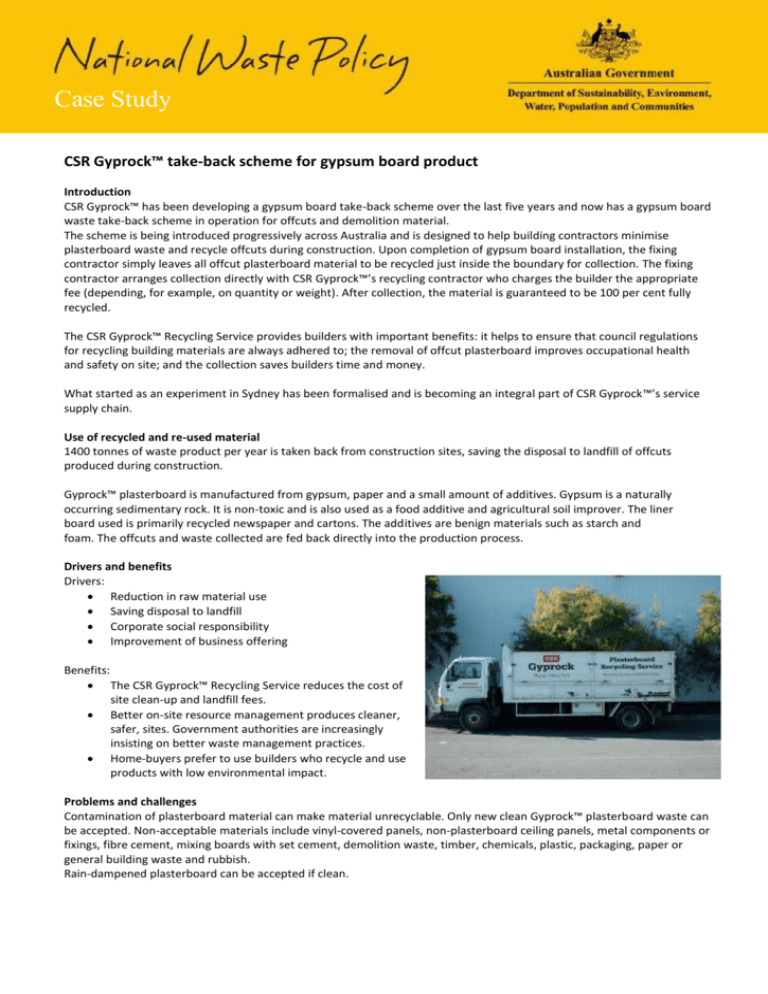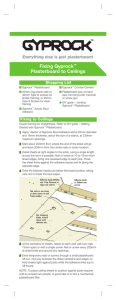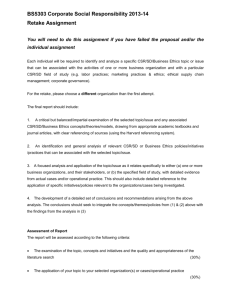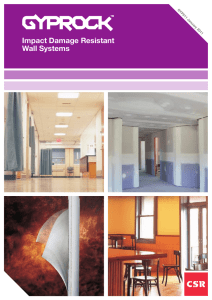
Case Study
CSR Gyprock™ take-back scheme for gypsum board product
Introduction
CSR Gyprock™ has been developing a gypsum board take-back scheme over the last five years and now has a gypsum board
waste take-back scheme in operation for offcuts and demolition material.
The scheme is being introduced progressively across Australia and is designed to help building contractors minimise
plasterboard waste and recycle offcuts during construction. Upon completion of gypsum board installation, the fixing
contractor simply leaves all offcut plasterboard material to be recycled just inside the boundary for collection. The fixing
contractor arranges collection directly with CSR Gyprock™’s recycling contractor who charges the builder the appropriate
fee (depending, for example, on quantity or weight). After collection, the material is guaranteed to be 100 per cent fully
recycled.
The CSR Gyprock™ Recycling Service provides builders with important benefits: it helps to ensure that council regulations
for recycling building materials are always adhered to; the removal of offcut plasterboard improves occupational health
and safety on site; and the collection saves builders time and money.
What started as an experiment in Sydney has been formalised and is becoming an integral part of CSR Gyprock™’s service
supply chain.
Use of recycled and re-used material
1400 tonnes of waste product per year is taken back from construction sites, saving the disposal to landfill of offcuts
produced during construction.
Gyprock™ plasterboard is manufactured from gypsum, paper and a small amount of additives. Gypsum is a naturally
occurring sedimentary rock. It is non-toxic and is also used as a food additive and agricultural soil improver. The liner
board used is primarily recycled newspaper and cartons. The additives are benign materials such as starch and
foam. The offcuts and waste collected are fed back directly into the production process.
Drivers and benefits
Drivers:
Reduction in raw material use
Saving disposal to landfill
Corporate social responsibility
Improvement of business offering
Benefits:
The CSR Gyprock™ Recycling Service reduces the cost of
site clean-up and landfill fees.
Better on-site resource management produces cleaner,
safer, sites. Government authorities are increasingly
insisting on better waste management practices.
Home-buyers prefer to use builders who recycle and use
products with low environmental impact.
Problems and challenges
Contamination of plasterboard material can make material unrecyclable. Only new clean Gyprock™ plasterboard waste can
be accepted. Non-acceptable materials include vinyl-covered panels, non-plasterboard ceiling panels, metal components or
fixings, fibre cement, mixing boards with set cement, demolition waste, timber, chemicals, plastic, packaging, paper or
general building waste and rubbish.
Rain-dampened plasterboard can be accepted if clean.
Solutions
To meet stringent quality standards, CSR has trained and employed
selected contractors who understand Gyprock™’s requirements.
Opportunities for other projects
If plasterboard material can be separated from demolition waste there is
an opportunity for greater recycling.
Contacts and links
CSR Gyprock website:
http://www.gyprock.com.au/
CSR Gyprock Recycling Service Case Study:
http://www.gyprock.com.au/resources/gyprock™-recycling-service.aspx
Taylor Woodrow case study from UK:
http://www.article13.com/A13_ContentList.asp?strAction=GetPublication&PNID=1358
Consultation
Linden Birch, Group Environment Manager, CSR Limited
Scott Clarkson, Manager CSR Innovation
Photo attribution
Photos courtesy of CSR Gyprock™
© Commonwealth of Australia 2011
This work is copyright. You may download, display, print and reproduce this
material in unaltered form only (retaining this notice) for your personal, noncommercial use or use within your organisation. Apart from any use as permitted
under the Copyright Act 1968, all other rights are reserved. Requests and enquiries
concerning reproduction and rights should be addressed to Department of
Sustainability, Environment, Water, Populations and Communities, Public Affairs,
GPO Box 787 Canberra ACT 2601 or email public.affairs@environment.gov.au
The views and opinions expressed in this publication are those of the authors and
do not necessarily reflect those of the Australian Government or the Minister for
Sustainability, Environment, Water, Population and Communities.
While reasonable efforts have been made to ensure that the contents of this
publication are factually correct, the Commonwealth does not accept responsibility
for the accuracy or completeness of the contents, and shall not be liable for any loss
or damage that may be occasioned directly or indirectly through the use of, or
reliance on, the contents of this publication.












